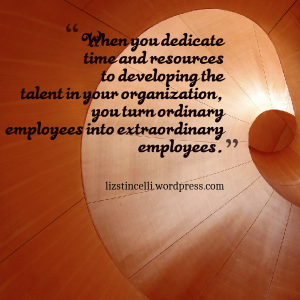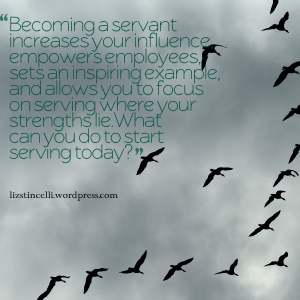“Divide and rule, the politician cries; unite and lead, is the watchword of the wise.” —Johann Wolfgang von Goethe
By Elizabeth Stincelli, DM
Why?
Why is it so important to unite your team? When your team is divided it is every man for himself. Each member has their own agenda and is looking out for their own best interest. When a team is united, true collaboration can take place. Every member is putting their best effort into what is best for the team as a whole. Each member plays an important role in reaching the shared goals of the group. So, what behaviors will help unite your team?
Finding commonality
Barbara Deming said, “The longer we listen to one another – with real attention – the more commonality we will find in all our lives. That is, if we are careful to exchange with one another life stories and not simply opinions.” Everyone wants to feel a sense of belonging, to be part of something bigger than themselves, and to work with others with whom they can relate. By creating a sense of community and belonging you can develop a team identity and begin to unite your team.
Eliminating the us vs. them mentality
Sharon Salzberg believes, “We can learn the art of fierce compassion – redefining strength, deconstructing isolation and renewing a sense of community, practicing letting go of rigid us-vs.-them thinking – while cultivating power and clarity in response to difficult situations.” Unity requires the building of trusting, respectful relationships. An us vs. them mentality undermines your ability to form meaningful relationships throughout your team. Recognize that your team is your #1 asset; every member has something to contribute. Help unite your team by eliminating the us vs. them mentality and by giving credit where it is due, communicating openly, and showing respect for every member.
Recognize that everyone adds value
Michelle Obama explained, “We learned about gratitude and humility – that so many people had a hand in our success, from the teachers who inspired us to the janitors who kept the school clean… and we were taught to value everyone’s contribution and treat everyone with respect.” Everyone wants to know that their contribution is valued. Every member of the team is there for a reason, they have a specific role to play, and they bring with them unique experiences and knowledge. Unite your team by showing them that you recognize the value they bring to the team. Invest in them and provide opportunities for growth. Give them the support, encouragement, and the resources they need to be successful.
Share the success
Michael Ironside tells us, “People who get involved with the success of something have to be given at least some share in that success.” When the team succeeds, everyone on the team succeeds. Create a win-win team environment where individual members benefit as the team progresses. Focus on removing obstacles and helping others grow and succeed. Every day offers the opportunity to take on individual and shared challenges that help us grow and move us one step closer to achieving our goals. Set ambitious goals, unite your team under one vision, and then share and celebrate successes both small and large.
Let leaders emerge naturally
Robin S. Sharma reminded us, “Leadership is not about a title or a designation. It’s about impact, influence, and inspiration. Impact involves getting results, influence is about spreading the passion you have for your work, and you have to inspire team-mates and customers.” Help team members recognize their strengths and weaknesses then find ways to empower them to use their strengths for the benefit of the team. Serve as a coach, at the sidelines, allowing the team to share in the leadership. Allow team members to step up when their strengths fit the current needs of the group. Unite your team by empowering them to stand up for what they believe in, always have their back, and let leaders emerge from among the ranks.
Unite Your Team
Create unity in your team where collaboration, innovation, and continual growth can take place. Develop a supportive environment where the contribution of each member is recognized and valued. Find commonality, eliminate the us vs. them mentality, recognize that everyone adds value, share the success, and let leaders emerge naturally. A successful team is a united team.
© 2015 Elizabeth Stincelli
Elizabeth Stincelli is passionate about recognizing and inspiring the leader in each of us. She is the CEO of Stincelli Advisors where she focuses on helping organizations engage employees and improve organizational culture. Elizabeth holds a Doctor of Management degree with an emphasis on organizational leadership.
Learn more about Elizabeth by visiting her website, stincelliadvisors.com and connect with her on Twitter @infinitestin, Google+, and LinkedIn. You can contact her by email at stincelliadvisors@gmail.com.








